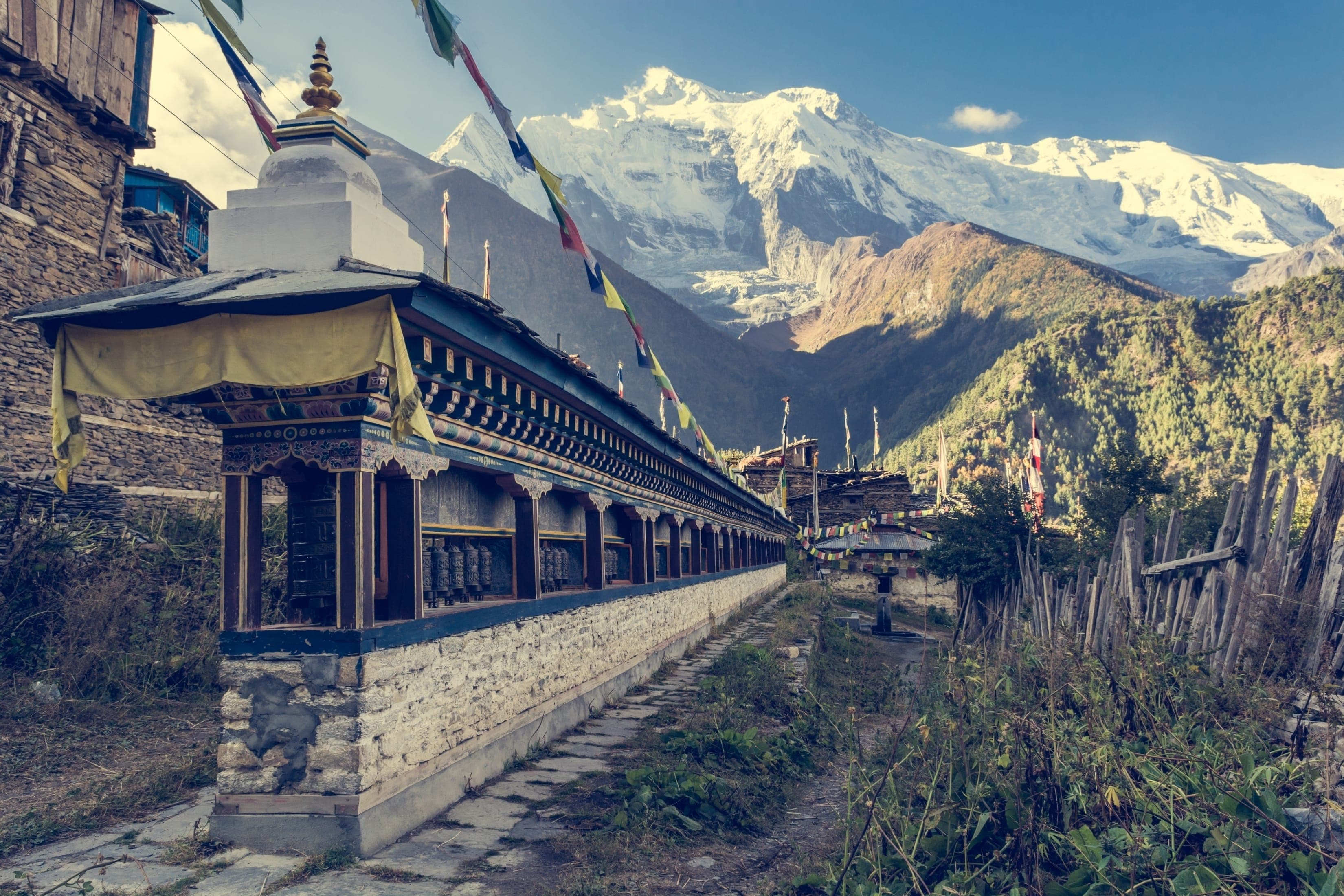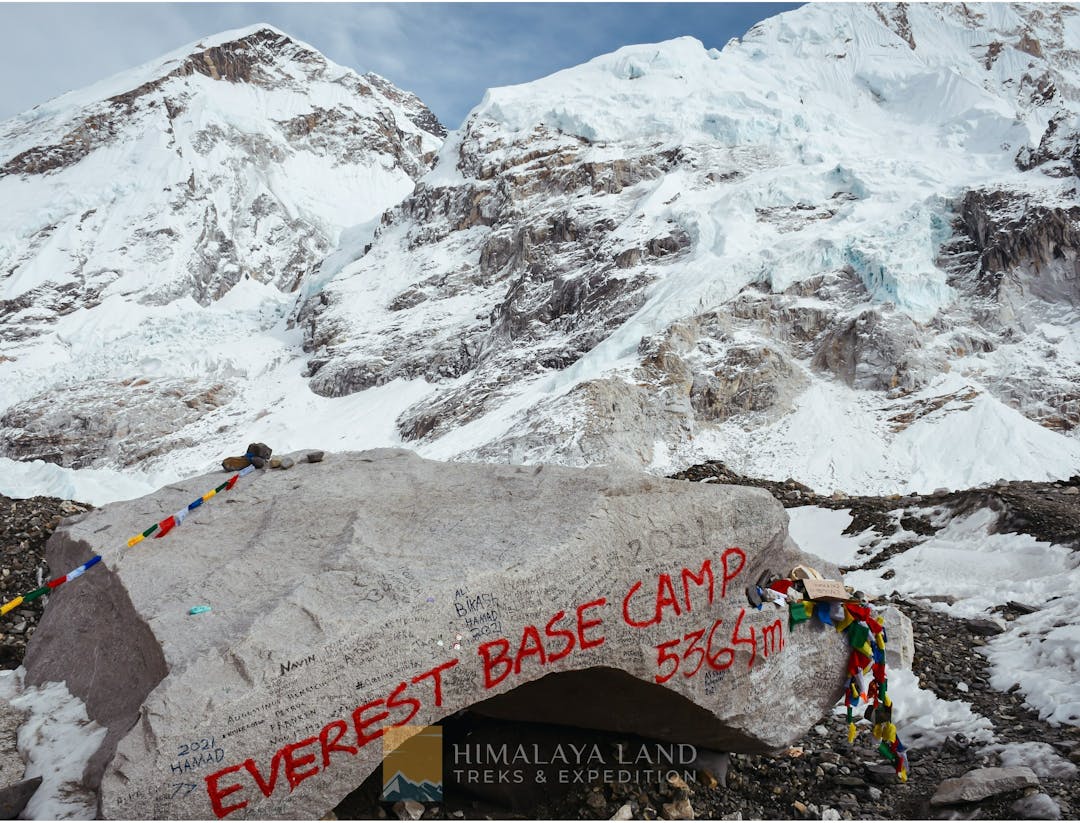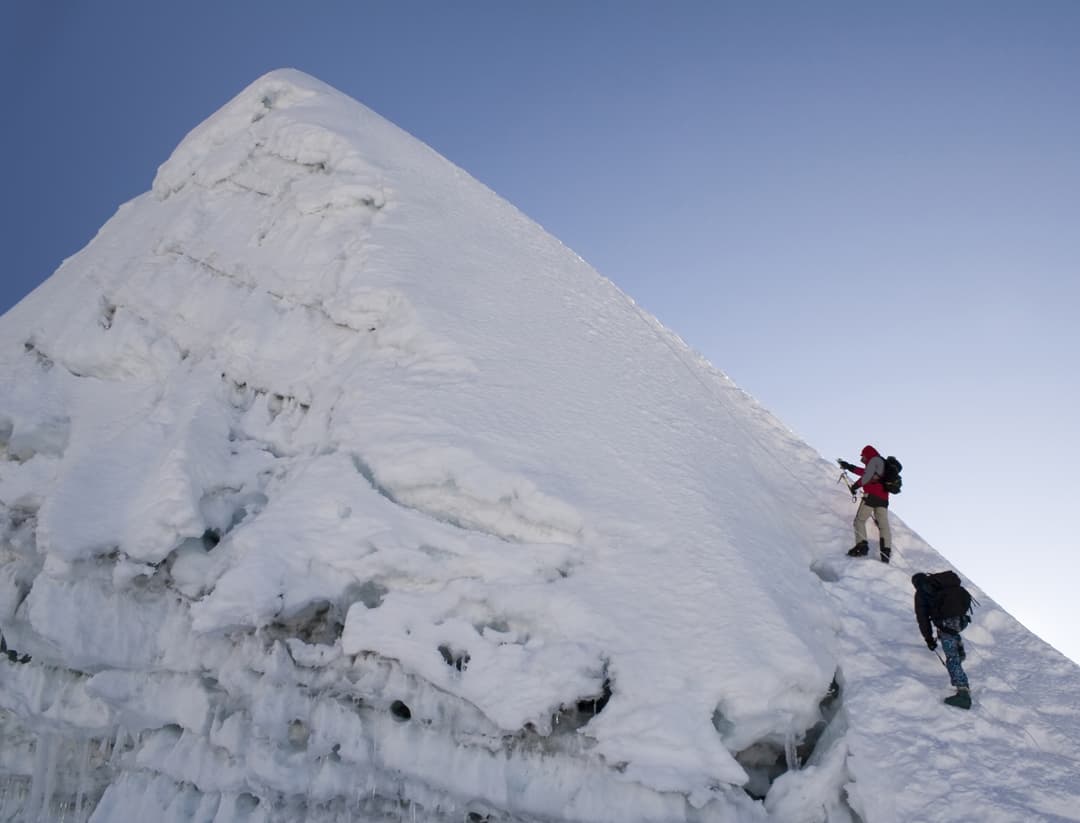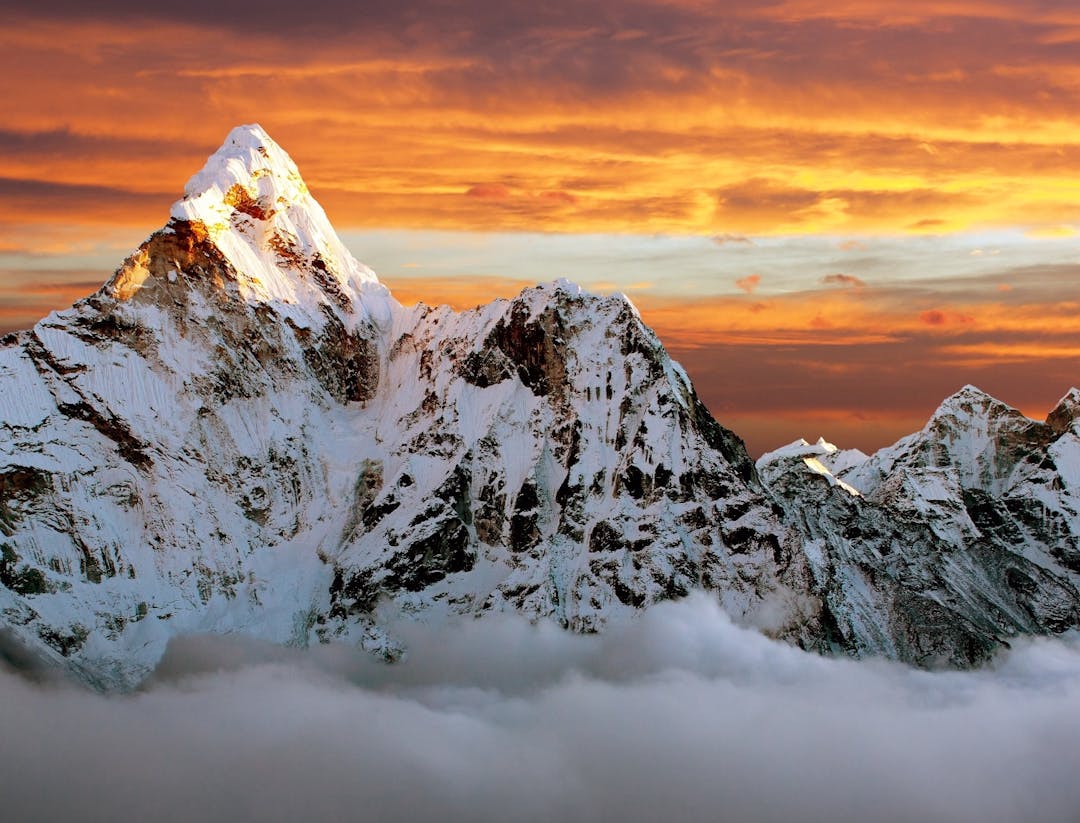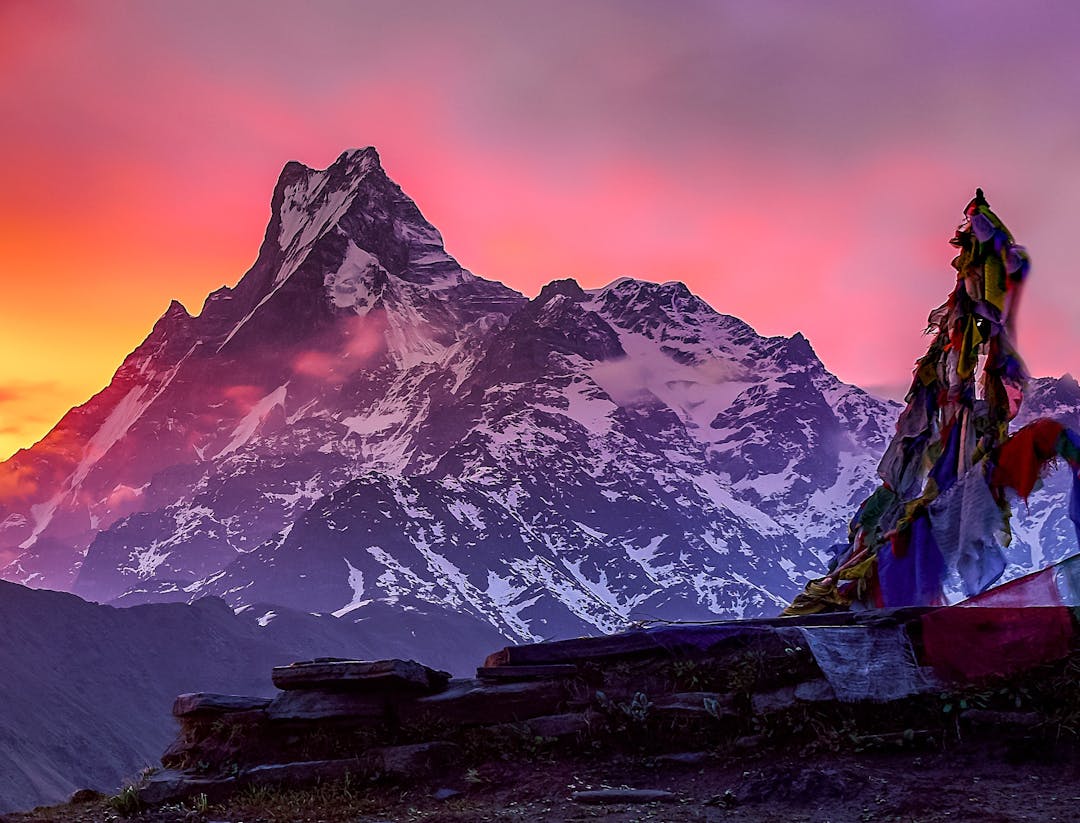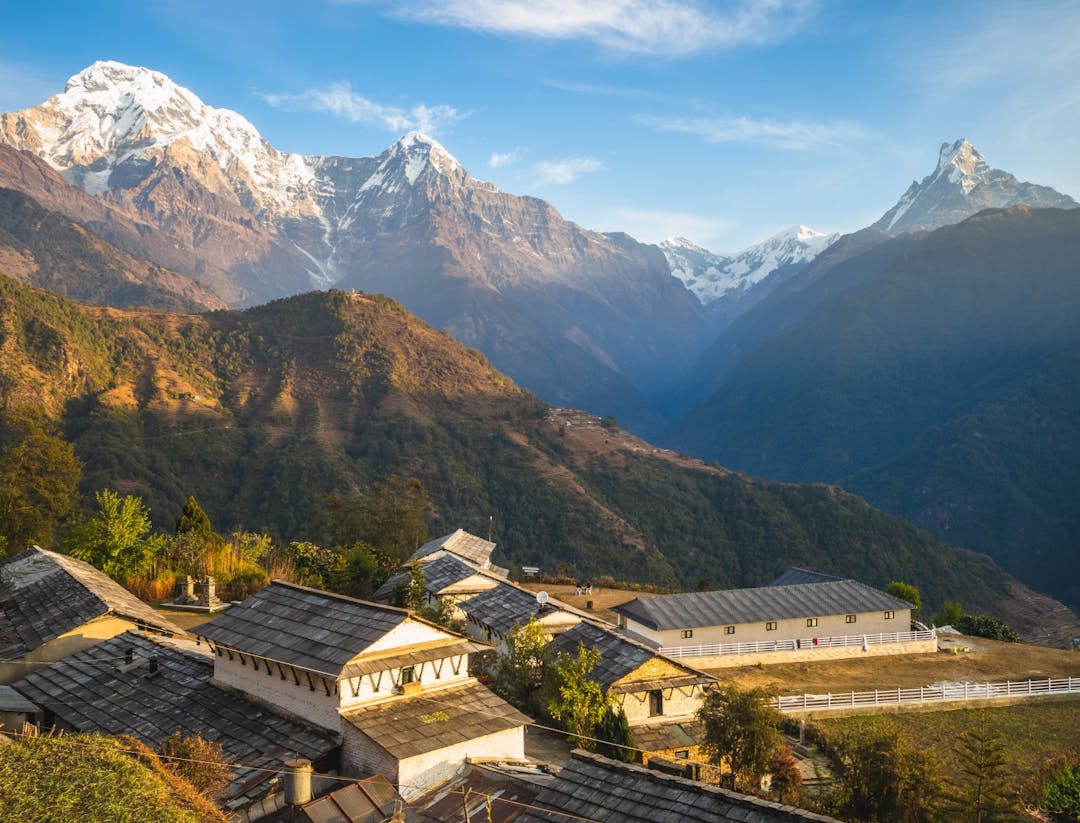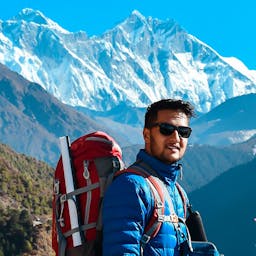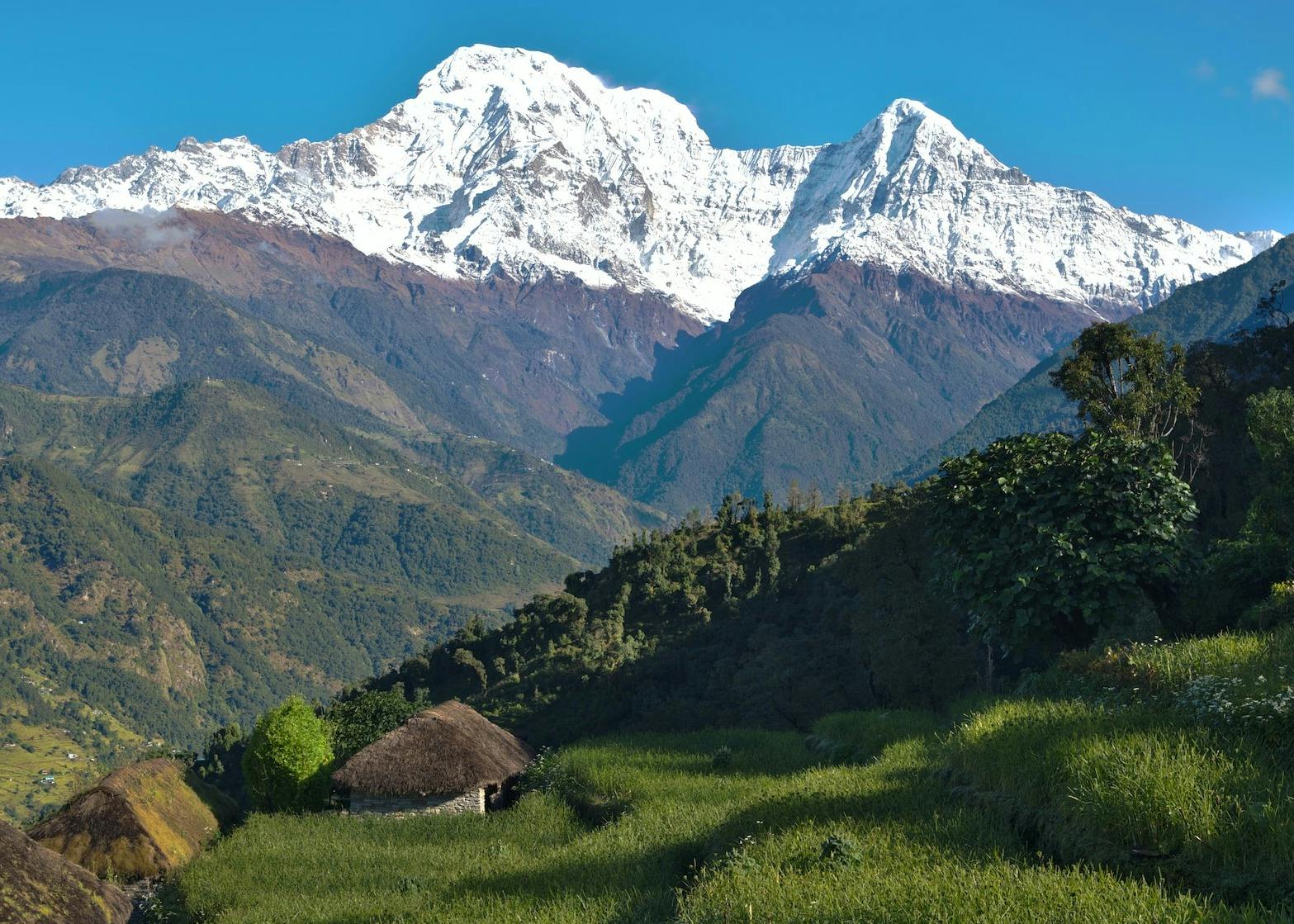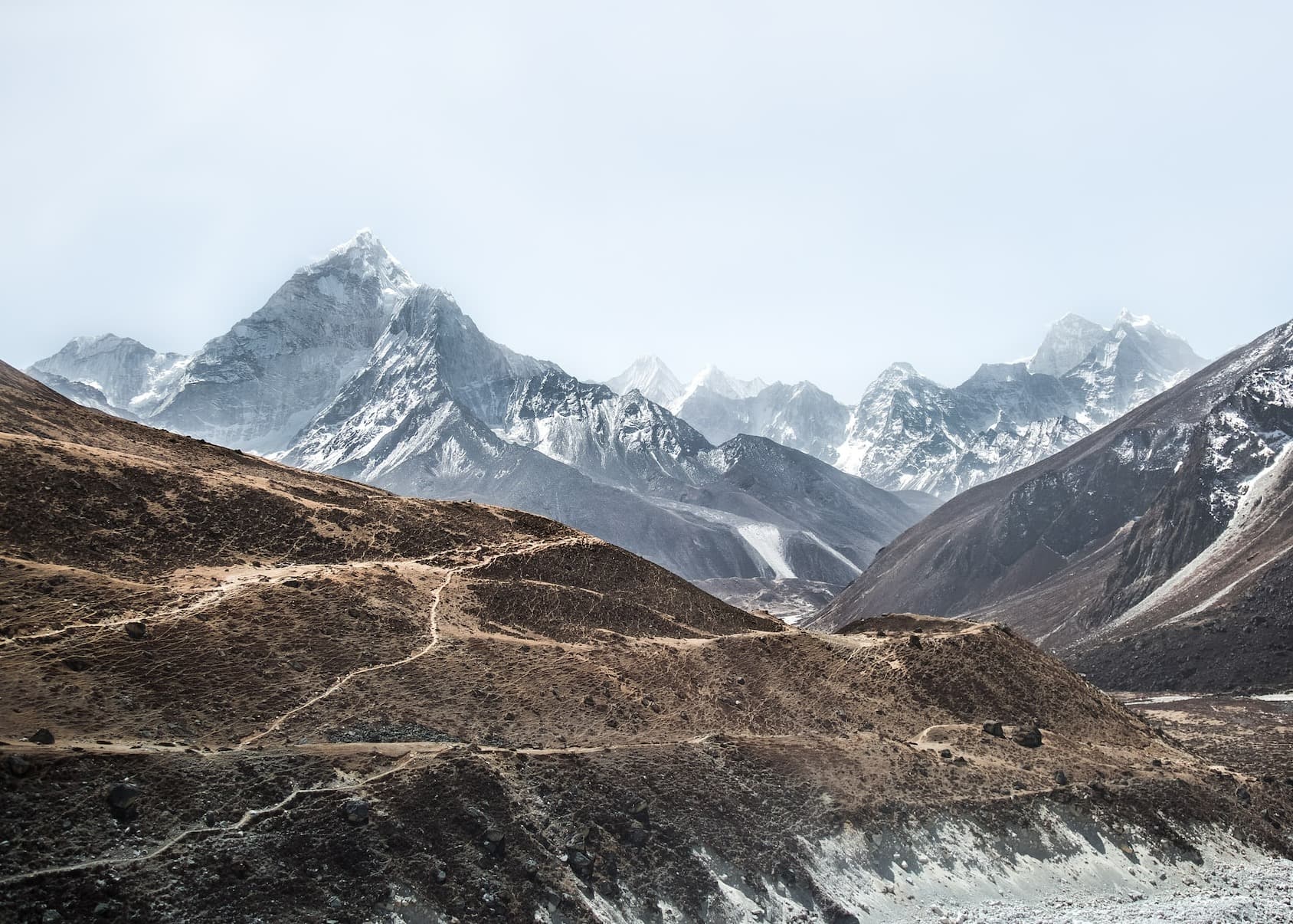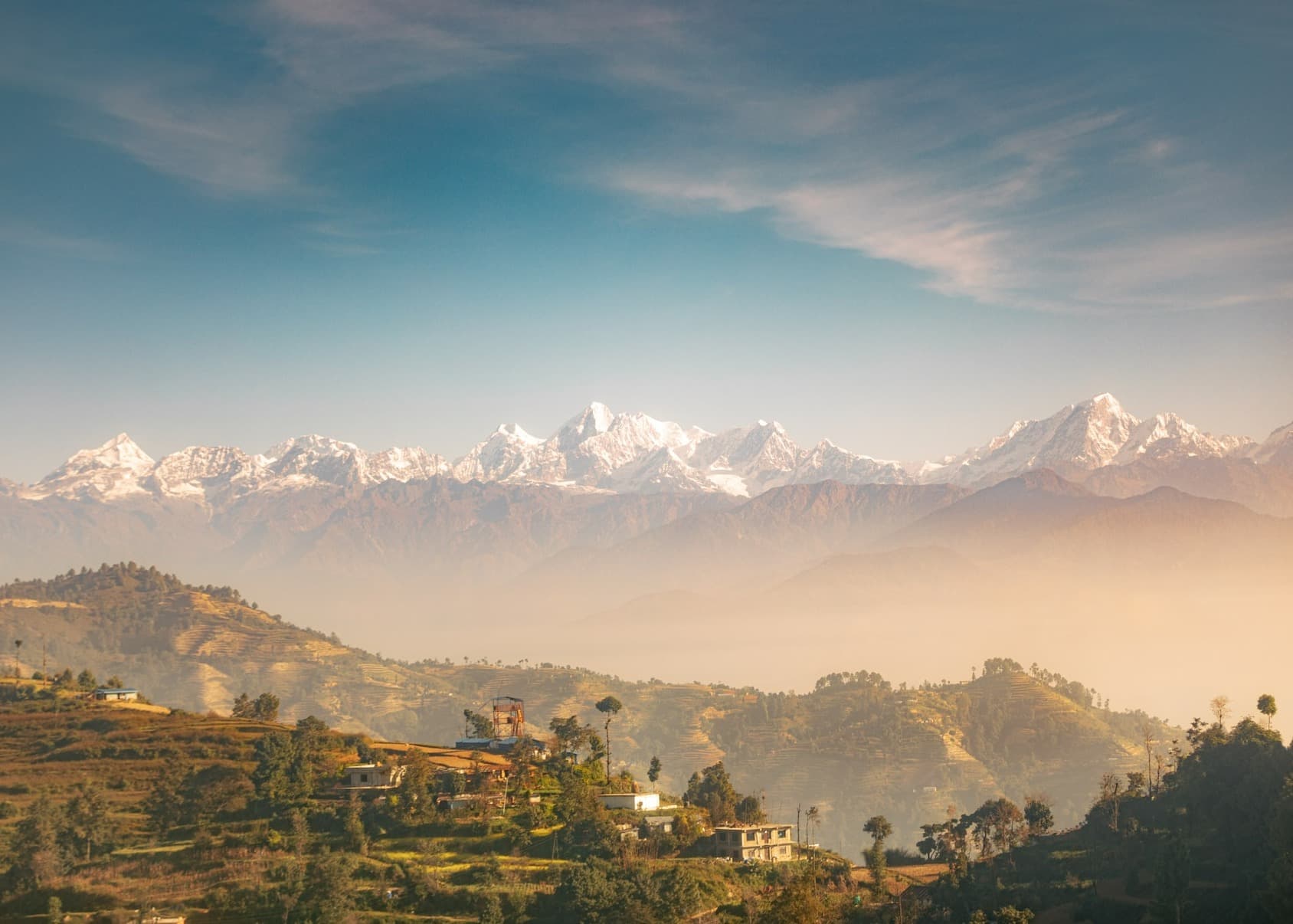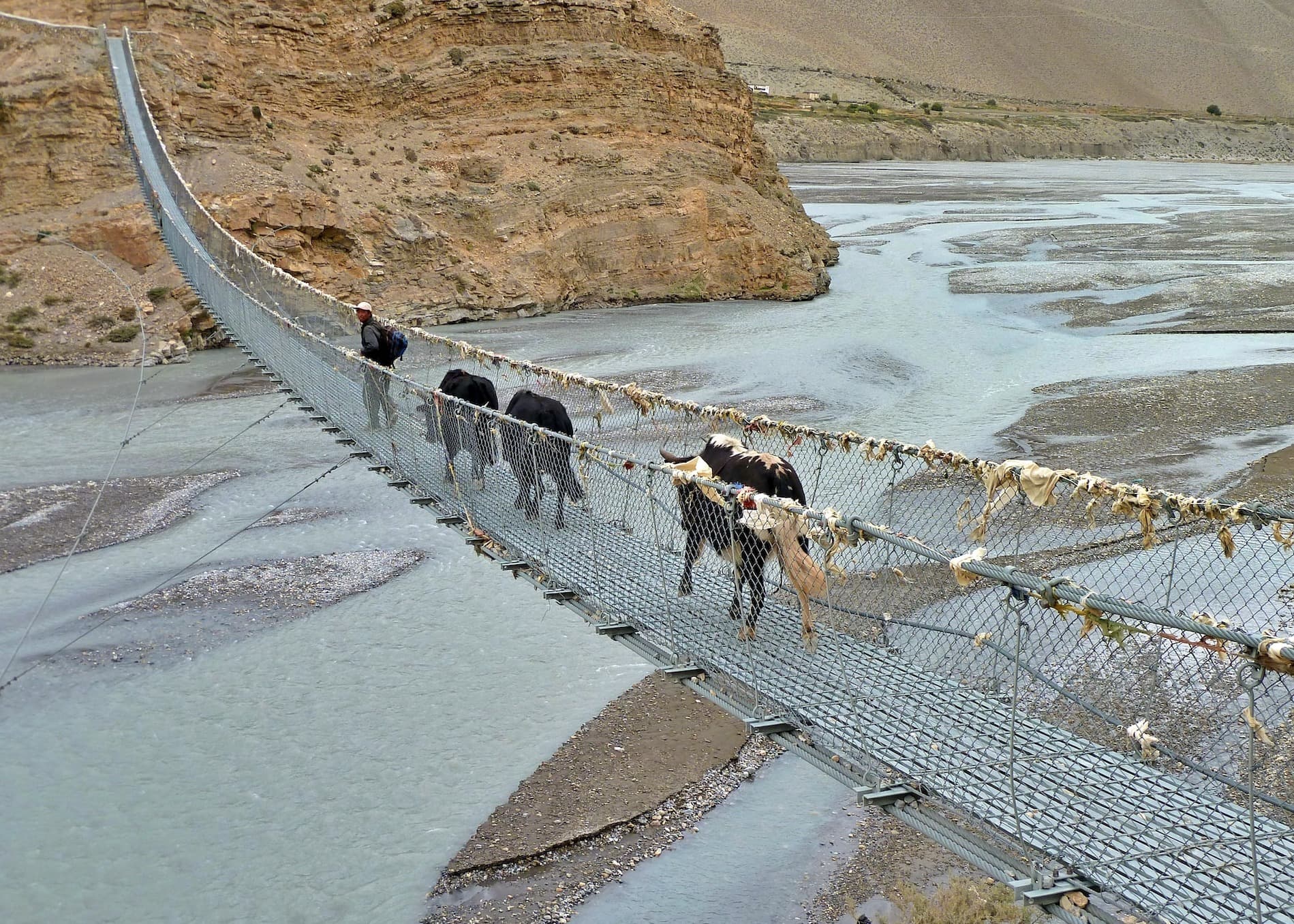The Annapurna Circuit Trek is one of the most popular and challenging treks in the world. Spanning over 160-230 kilometers (depending on the route), this trek offers stunning views of the Himalayas, diverse landscapes, and an opportunity to experience the unique culture of the Nepalese people. However, conquering this trek requires proper planning, physical fitness, and mental preparation. In this ultimate guide, we will provide you with all the information you need to conquer the Annapurna Circuit Trek in 2023.
New Update for Annapurna Circuit Trek
Recently, there has been an important update regarding the Annapurna Circuit trek in Nepal that is crucial for all international trekkers to know. Starting from 1st April 2023, it will be mandatory for all hikers to have a licensed guide for hiking most routes in Nepal, including the famous Annapurna Circuit and many other treks in Annapurna Region.
This new regulation comes as a surprise to many, as it was announced just a few weeks before the start of the season. It is essential for hikers to take this regulation seriously, as non-compliance can lead to fines and other legal consequences.
The decision to enforce the use of licensed guides on the Annapurna Circuit and other popular trekking routes in Nepal is aimed at ensuring the safety of trekkers and promoting sustainable tourism practices. Licensed guides are trained and knowledgeable about the terrain, culture, and safety precautions necessary for a successful and safe trekking experience.
International trekkers planning to visit the Annapurna Circuit in Nepal must ensure that they have a licensed guide with them. It is advisable to arrange a guide before arriving in Nepal to avoid any last-minute confusion and to ensure that you find a reliable guide with the necessary license.
Furthermore, having a licensed guide with you during the trek will enhance your overall experience as they can offer insights into the local culture and environment. They can also assist in communication with locals and provide additional support in case of emergencies.
In conclusion, the new regulations for the Annapurna Circuit trek and other popular routes in Nepal highlight the importance of safety and responsible tourism. Hiring a licensed guide is not only mandatory but also a valuable asset to ensure a memorable and safe trekking experience. So, plan ahead, find a licensed guide, and enjoy the stunning beauty of the Annapurna Circuit in Nepal!
Plan Your Trekking Route
There are two main trekking routes to choose from on the Annapurna Circuit Trek: the classic route and the new route. The classic route starts in Besishahar and ends in Nayapul, while the new route is a shorter version that starts in Chame and ends in Jomsom. The new route is less crowded and offers better views of the mountains, but it's more challenging. Before choosing your route, consider your fitness level, time, and budget.
Get Your Permits
If you're planning on embarking on a trek in the Annapurna Conservation Area, one of the most breathtakingly beautiful regions in Nepal, there's one essential thing you need to take care of before you hit the trail: getting your permits.
All trekkers, regardless of nationality, are required to obtain a permit to enter the Annapurna Conservation Area. This is because the area is designated as a conservation zone, meaning that special measures are in place to protect the natural environment and wildlife. Obtaining a permit is not only a legal requirement, but also helps to fund conservation efforts and local development projects.
The cost of the permit varies depending on the length of your trek. For a 15-day trek, the permit costs $20. For a 30-day trek, the permit costs $30. And for a three-month trek, the permit costs $50. It's important to note that these permits are non-transferable and non-refundable, so be sure to plan your trek accordingly.
In addition to the conservation area permit, you'll also need to obtain a TIMS card (Trekkers' Information Management System). The TIMS card is designed to help track trekkers and ensure their safety, as well as provide valuable data for future planning and development of the trekking industry in Nepal. The cost of the TIMS card is $20.
Fortunately, obtaining your permits and TIMS card is a relatively straightforward process. If you're booking your trek through a reputable trekking agency, like Himalaya Land Treks, your permits and TIMS card will be included in your package, and the agency will take care of all the paperwork for you. This means you can focus on preparing for your trek, rather than worrying about bureaucratic red tape.
In conclusion, obtaining your permits and TIMS card is an essential step in preparing for a trek in the Annapurna Conservation Area. It not only ensures that you're trekking legally and responsibly, but also helps to fund conservation efforts and support local communities. With the help of a reputable trekking agency like Himalaya Land Treks, the process of obtaining your permits and TIMS card is easy and hassle-free, leaving you free to focus on enjoying the natural beauty of this incredible region.
Prepare Your Gear
Packing for the Annapurna Circuit Trek requires careful planning. Make sure to pack warm and comfortable clothing, a good quality sleeping bag, trekking boots, a waterproof jacket, and a hat. Don't forget to bring a first aid kit, sunscreen, sunglasses, and a water bottle. You can rent or buy trekking gear in Kathmandu or Pokhara.
Packing List
The right gear and equipment are crucial for a successful trek. Here is a list of essential items that you should pack for the Annapurna Circuit Trek:
- Trekking boots: Make sure you wear comfortable and waterproof trekking boots that provide adequate ankle support.
- Trekking pants: Choose lightweight and quick-drying pants that are comfortable to wear during long walks.
- Thermal layers: Pack thermal underwear, fleece jackets, and warm hats to stay warm in cold temperatures.
- Sleeping bag: Bring a warm sleeping bag suitable for cold temperatures.
- First aid kit: Include basic first aid items such as bandages, antiseptics, and pain relievers.
- Water bottle and purifying tablets: Carry a refillable water bottle and water purifying tablets to stayhydrated throughout the trek.
- Sunglasses and sunscreen: Protect your eyes and skin from the harsh sun by carrying sunglasses and sunscreen with a high SPF.
- Headlamp: Carry a headlamp or flashlight with extra batteries for walking in low-light conditions.
Trek Itinerary
Train Your Body
This trek is physically demanding and requires a good level of fitness to complete. Therefore, it's important to train your body before embarking on this challenging trek.
Cardiovascular exercises are essential for building endurance, which is crucial for long-distance trekking. Running, cycling, swimming, or any other form of cardio exercise that gets your heart rate up are great options. Aim for at least 30 minutes of cardio exercise, three to four times a week, gradually increasing the duration and intensity as your fitness improves.
Hiking is another excellent way to prepare for the Annapurna Circuit Trek. Find local trails or hills that mimic the terrain you'll be encountering on the trek. Try to hike at least once a week, gradually increasing the duration and difficulty of your hikes as your fitness improves. This will help to build endurance, as well as strengthen your leg muscles and improve your balance and coordination.
Strength training is also an important component of your training program. Focus on exercises that work your legs, core, and upper body, such as squats, lunges, push-ups, and planks. You don't need to lift heavy weights to see results; bodyweight exercises are effective for building strength and endurance.
Walking with a backpack is another crucial aspect of your training program. Start by walking with a light backpack, gradually adding weight as your fitness improves. This will help you get used to carrying the weight of your backpack on the trek, and will also strengthen your leg and core muscles.
In conclusion, training your body before embarking on the Annapurna Circuit Trek is crucial for your safety, enjoyment, and success on the trek. Cardiovascular exercise, hiking, strength training, and walking with a backpack are all important components of your training program. Be sure to start your training program well in advance of your trek, gradually increasing the duration and intensity of your workouts as your fitness improves. With the right training and preparation, you'll be ready to tackle this epic adventure and experience the incredible beauty of the Annapurna region.
Acclimatize Properly
Acclimatization is an essential aspect of trekking in high altitudes. It refers to the process by which your body adjusts to the decreasing levels of oxygen at higher elevations. The Annapurna Circuit Trek takes you to elevations over 5,000 meters, so acclimatization is crucial to your safety and enjoyment of the trek.
The trek begins at a relatively low altitude, giving you time to gradually acclimatize. However, it's important to take rest days and ascend gradually to avoid altitude sickness. Altitude sickness can occur when you ascend too quickly, and your body doesn't have enough time to adjust to the changes in air pressure and oxygen levels.
To acclimatize properly on the Annapurna Circuit Trek, you should plan for rest days every few days. This allows your body to catch up and adjust to the new altitude. You should also avoid alcohol and smoking, which can make it harder for your body to adjust to the altitude.
Ascending gradually is also important. You should aim to increase your elevation by no more than 300-500 meters per day. This slow and steady approach gives your body time to adjust to the changes in altitude and decreases the risk of altitude sickness.
In addition, staying hydrated is important for acclimatization. You should drink at least 3-4 liters of water per day to prevent dehydration, which can make it harder for your body to adjust to the altitude.
In conclusion, acclimatization is a critical aspect of trekking in high altitudes like the Annapurna Circuit Trek. Taking rest days, ascending gradually, avoiding alcohol and smoking, and staying hydrated are all key to acclimatizing properly. By following these guidelines, you can help reduce the risk of altitude sickness and ensure that you have a safe and enjoyable trek.
Stay Hydrated and Eat Well
Staying hydrated and eating well are two essential components of any trekking adventure, especially one as challenging as the Annapurna Circuit Trek. Proper hydration and nutrition help to keep your body functioning at its best and ensure that you have the energy and stamina to complete the trek.
Hydration is crucial at high altitudes, where the air is dry and the body loses more fluids through sweating and breathing. Therefore, it's essential to drink plenty of water throughout the trek. Aim to drink at least 3-4 liters of water per day, even if you don't feel thirsty. Carry water purification tablets or a water filter to ensure that you have access to safe drinking water.
In addition to water, you can also drink other fluids such as tea, soup, and juice to help keep you hydrated. However, it's best to avoid alcoholic beverages, as they can dehydrate you and make it harder for your body to adjust to the altitude.
Eating a balanced diet is also essential for keeping your energy levels up and helping your body recover from the physical demands of the trek. Aim to eat a variety of foods that include carbohydrates, proteins, and fats. Carbohydrates provide the energy needed for trekking, while proteins help to repair and build muscle tissue, and fats provide sustained energy.
You can find a variety of food options on the trek, including local Nepalese dishes, western-style meals, and snacks such as nuts and energy bars. It's also important to eat enough food to fuel your body throughout the day. However, overeating can cause discomfort and affect your performance, so listen to your body's hunger and fullness cues.
In conclusion, staying hydrated and eating well are essential for conquering the Annapurna Circuit Trek. Make sure to drink plenty of water, carry water purification tablets or a water filter, and eat a balanced diet that includes carbohydrates, proteins, and fats. By taking care of your body's hydration and nutrition needs, you'll have the energy and stamina to complete the trek and enjoy the incredible beauty of the Annapurna region.
Respect the Culture
The Annapurna Circuit Trek passes through many traditional Nepalese villages. It's important to respect the local culture and customs by dressing modestly, asking for permission before taking photos, and not littering.
In conclusion, conquering the Annapurna Circuit Trek requires proper planning, physical fitness, and mental preparation. By following the tips in this ultimate guide, you'll be able to make the most of your trek and enjoy the stunning beauty of the Himalayas. Remember to stay safe, stay hydrated, and respect the local culture, and you'll have an unforgettable experience in 2023.
The Annapurna Circuit Trek is one of the most sought-after treks in Nepal. It offers breathtaking views of snow-capped mountains, high passes, diverse landscapes, and cultural experiences. The trek is challenging, but with proper planning and preparation, it can be conquered. In this guide, we will provide you with all the necessary information to make your Annapurna Circuit Trek in 2023 a success.
Pre-Trek Preparation
Before embarking on the trek, it is important to prepare yourself both physically and mentally. It is recommended to engage in physical activities that help in building endurance and strength. Cardiovascular exercises like hiking, cycling, or running will help prepare you for the trek. It is also advisable to practice yoga or stretching exercises to improve flexibility and reduce the risk of injury.
Mental preparation is equally important. The Annapurna Circuit Trek is a long and challenging trek that requires patience, determination, and mental toughness. It is important to set realistic expectations and have a positive mindset. Mental preparation can involve reading about the trek, talking to experienced trekkers, and practicing meditation or mindfulness exercises.
The Annapurna Circuit Trek takes approximately 18-21 days to complete. Here is a day-by-day itinerary:
Day 1: Drive from Kathmandu to Besisahar (790m/2,591ft) 6-7 hours
Day 2: Trek from Besisahar to Bahundanda (1,310m/4,297ft) 5-6 hours
Day 3: Trek from Bahundanda to Chyamche (1,430m/4,690ft) 5-6 hours
Day 4: Trek from Chyamche to Dharapani (1,943m/6,373ft) 5-6 hours
Day 5: Trek from Dharapani to Chame (2,630m/8,626ft) 5 hours
Day 6: Trek from Chame to Pisang (3,200m/10,496ft) 5 hours
Day 7: Trek from Pisang to Manang (3,540m/11,611ft) 7-8 hours
Day 8: Trek from Manang to Khangsar (3,745m/12,286ft) 2-3 hours
Day 9: Trek from Khangsar to Tilicho Base Camp (4,140m/13,583ft) 4-5 hours
Day 10: Hike to Tilicho Lake (4,949m/16,138ft) and Trek back to Tilicho Base Camp
Day 11: Trek from Tilicho Base Camp to Yak Kharka (4018m/13179ft) 5-6 hours
Day 12: Trek from Yak Kharka to Thorung Phedi (4,450m/14,596ft) 4-5 hours
Day13: Trek from Thorung Phedi to Muktinath (3800m/12,464ft) via Thorung Pass (5,416m/17,764ft),
Day14: Trek from Muktinath to Jomsom (2713m/8,908ft) 4-5 hours
Day15: Fly from Jomsom to Pokhara (820m/2690ft) 20 minutes
Day16: Drive from Pokhara to Kathmandu by bus (1300m/4265ft) 6-7 hours | Farewell Dinner
Travel insurance for the Annapurna circuit trek
The Annapurna Circuit trek in Nepal is a popular and challenging trek that attracts thousands of trekkers every year. While it is an exciting and rewarding experience, it is important to remember that trekking at high altitudes can also be risky. Therefore, it is highly recommended to get travel insurance before embarking on the Annapurna Circuit trek.
Travel insurance can provide you with peace of mind and financial protection in case of unexpected events such as accidents, illness, or trip cancellation. Here are some things to consider when purchasing travel insurance for the Annapurna Circuit trek:
High altitude coverage: Most standard travel insurance policies do not cover trekking at high altitudes above 4,000 meters. However, the Annapurna Circuit trek goes up to an altitude of 5,416 meters. Therefore, it is crucial to ensure that your travel insurance covers high altitude trekking.
Medical coverage: Altitude sickness is a common concern for trekkers on the Annapurna Circuit. Make sure that your travel insurance policy covers medical emergencies related to altitude sickness and other illnesses or injuries that may occur during the trek.
Emergency evacuation coverage: In case of a serious illness or injury, emergency evacuation may be necessary. This can be very expensive in remote areas such as the Annapurna Circuit. Make sure that your travel insurance policy covers emergency evacuation by helicopter or other means.
Trip cancellation coverage: Unforeseen circumstances such as flight cancellations or natural disasters can disrupt your travel plans. Look for a travel insurance policy that covers trip cancellation or interruption due to these types of events.
Adventure sports coverage: The Annapurna Circuit trek involves trekking at high altitudes, crossing suspension bridges, and walking on rugged terrain. Therefore, it is essential to ensure that your travel insurance policy covers adventure sports and activities.
Before purchasing travel insurance for the Annapurna Circuit trek, read the policy carefully to understand what is covered and what is not. Look for a policy that is specifically designed for trekking at high altitudes and provides comprehensive coverage for medical emergencies, emergency evacuation, trip cancellation, and adventure sports. With the right travel insurance coverage, you can enjoy the stunning beauty of the Annapurna Circuit trek with peace of mind.
How difficult is the Annapurna Circuit trek?
The Annapurna Circuit trek is considered one of the most challenging and rewarding treks in the world. The trek takes approximately 15-20 days and covers a distance of around 160-230 kilometers, depending on the route you choose. The trek involves crossing high mountain passes, hiking through rugged terrain, and ascending to altitudes of over 5,000 meters. Therefore, the Annapurna Circuit trek requires a good level of physical fitness and stamina.
The difficulty level of the Annapurna Circuit trek can vary depending on several factors such as the route you choose, the time of the year you trek, and your level of experience and fitness. Here are some factors that can affect the difficulty level of the Annapurna Circuit trek:
Altitude: Trekking at high altitude can be physically challenging and can cause altitude sickness. The Annapurna Circuit trek involves ascending to an altitude of over 5,000 meters, which can be difficult for some trekkers.
Weather: The weather in the Annapurna region can be unpredictable and harsh. During the monsoon season (June-August), the trek can be more challenging due to heavy rainfall and slippery trails.
Terrain: The terrain on the Annapurna Circuit trek is rugged and can be steep in some places. You will need to cross suspension bridges, climb steep steps, and walk on rocky terrain, which can be physically demanding.
Length of the trek: The Annapurna Circuit trek is a long and demanding trek that requires endurance and stamina. You will be walking for several hours each day, and some days can be more challenging than others.
Overall, the Annapurna Circuit trek is a challenging but rewarding experience that requires a good level of physical fitness and mental preparedness. With proper training, preparation, and a positive attitude, anyone can complete the trek. Hiring a licensed guide and porter can also make the trek easier and more enjoyable.
Do I need a guide for the Annapurna circuit trek?
The Annapurna Circuit Trek is a popular and scenic trek that offers stunning views of the Himalayas, diverse landscapes, and rich cultural experiences. While it is possible to trek independently, hiring a guide can greatly enhance your trekking experience. In this article, we will discuss why it is important to hire a guide for the Annapurna Circuit Trek and how the recent changes in government regulations make it even more crucial to do so.
Firstly, hiring a guide can provide valuable assistance and support throughout the trek. They are familiar with the trail, terrain, and weather conditions and can help you navigate through challenging sections. They can also help you arrange accommodations, meals, and transportation, saving you time and effort. Moreover, guides can offer insights into the local culture, customs, and history, enriching your trekking experience.
Secondly, trekking with a guide can ensure your safety. The Annapurna Circuit Trek is a challenging trek that reaches high altitudes, and altitude sickness can be a serious concern. Guides are trained in first aid and can identify the symptoms of altitude sickness. They can also monitor your health and adjust the itinerary accordingly to avoid any health risks. Additionally, in case of an emergency, they can provide prompt assistance and arrange for evacuation if necessary.
Lastly, the recent changes in government regulations make it even more important to hire a guide for the Annapurna Circuit Trek. Starting from April 1, 2023, the Nepalese government has implemented new rules for trekking in Nepal. One of the major changes is that all trekkers must hire a licensed guide or porter for the trek. This regulation aims to improve safety and reduce accidents, and failure to comply can result in fines and penalties.
In conclusion, hiring a guide for the Annapurna Circuit Trek is highly recommended. They can provide valuable assistance, enhance your experience, ensure your safety, and now, with the new government regulations, it is mandatory. Therefore, it is important to choose a reputable and experienced trekking agency to ensure that you have a safe and enjoyable trekking experience.
How to combine Annapurna circuit trek with the Annapurna Base Camp?
If you're an adventurous trekker looking to explore the stunning Annapurna region of Nepal, you might be wondering how to combine the Annapurna Circuit Trek with the Annapurna Base Camp Trek. The good news is that it is possible to combine these two treks to create a longer and more challenging trekking adventure. Here's what you need to know to make the most of your combined trek.
First, it's important to understand the differences between the Annapurna Circuit Trek and the Annapurna Base Camp Trek. The Annapurna Circuit Trek is a classic trek that takes you around the entire Annapurna massif, providing incredible views of the Himalayas and a glimpse into the culture and lifestyle of the local people. The trek typically takes around 14-16 days to complete and covers a distance of approximately 230km.
On the other hand, the Annapurna Base Camp Trek is a shorter and less strenuous trek that takes you to the base of Annapurna and Machapuchare mountains, providing stunning views of these peaks. The trek typically takes around 7-10 days to complete and covers a distance of approximately 115km.
To combine these two treks, you'll need to plan your route carefully. The most common route is to start with the Annapurna Circuit Trek and then branch off to the Annapurna Base Camp Trek. This route allows you to experience the best of both treks, including the stunning mountain views, cultural experiences, and challenging terrain.
Here's a suggested itinerary:
Day 1-3: Kathmandu to Besisahar to Chame
Start your journey in Kathmandu and take a bus to Besisahar. From there, take a jeep to Chame, which is the starting point of the Annapurna Circuit Trek.
Day 4-10: Chame to Manang to Thorong La Pass to Muktinath to Tatopani
These days will be spent trekking the Annapurna Circuit, which will take you through stunning mountain landscapes, traditional villages, and high mountain passes. The highlight of the trek is crossing the Thorong La Pass, which is the highest point of the trek at 5,416m. You'll also visit the sacred site of Muktinath before descending to Tatopani.
Day 11-14: Tatopani to Ghorepani to Poon Hill to Tadapani
From Tatopani, you'll branch off from the Annapurna Circuit Trek and start the Annapurna Base Camp Trek. You'll trek through rhododendron forests, traditional villages, and reach Poon Hill, which is known for its stunning sunrise views. You'll then trek to Tadapani.
Day 15-17: Tadapani to Chhomrong to Annapurna Base Camp to Bamboo
These days will be spent trekking to Annapurna Base Camp, which is the highlight of the Annapurna Base Camp Trek. You'll reach the base of Annapurna and Machapuchare mountains and experience stunning views of these peaks. You'll then trek back to Bamboo.
Day 18-21: Bamboo to Jhinu Danda to Nayapul to Pokhara
These final days will be spent trekking through traditional villages and hot springs, and eventually reaching Nayapul. From there, take a bus to Pokhara, where you can relax and enjoy the beautiful lakeside city.
Combining the Annapurna Circuit Trek with the Annapurna Base Camp Trek is a challenging and rewarding experience that provides stunning mountain views, cultural experiences, and a sense of achievement
When is the best time for trekking to Annapurna circuit?
The best time for trekking the Annapurna Circuit in Nepal is during the months of September to November (fall) and March to May (spring). These are the peak trekking seasons when the weather is usually clear and dry, making for great trekking conditions and clear views of the Himalayan mountain ranges.
During the fall season, the skies are generally clear, the weather is warm and dry, and the visibility is excellent. This makes it a great time for trekking the Annapurna Circuit, as you'll have clear views of the stunning mountain landscapes, including the snow-capped peaks of Annapurna, Dhaulagiri, and Manaslu.
During the spring season, the weather is mild and dry, making it an ideal time for trekking. The rhododendron forests along the Annapurna Circuit are also in full bloom during the spring season, making for a stunning sight.
It's worth noting that during the peak seasons, the Annapurna Circuit can get crowded, so it's important to plan ahead and book accommodations in advance. If you're looking for a quieter trekking experience, consider trekking during the offseason months of December to February or June to August. However, be aware that the weather can be more unpredictable during these times, with colder temperatures and a higher chance of rain and snow.
How much does the Annapurna circuit trek cost?
The cost of the Annapurna Circuit Trek can vary depending on several factors such as the season you choose to trek in, the duration of the trek, the type of accommodation you choose, and the services of the trekking agency you go with.
As we mentioned, Himalaya Land Treks offer the Annapurna Circuit Trek from US$ 1399 to US$ 1799, with discounts for groups. This is a reasonable price range for a well-organized trek with experienced guides and porters, as it includes all necessary permits, accommodations, meals, transportation, and other trekking essentials.
However, it's important to note that some trekking expenses, such as snacks, drinks, and tips for guides and porters, may not be included in the package price. Additionally, if you opt for more luxurious accommodations or extra services, such as helicopter rescue or oxygen cylinders, the cost will increase accordingly.
What is the accommodation and food like on the Annapurna circuit trek?
Accommodation on the Annapurna Circuit Trek varies depending on the route you take, the elevation you reach, and the level of comfort you're looking for. However, in general, you'll find a range of basic guesthouses and teahouses along the trekking trail.
These guesthouses and teahouses typically offer simple, yet comfortable, accommodations with basic amenities such as a bed, blankets, and pillows. Shared bathrooms are common, and they usually have squat toilets and cold water for showering. However, some higher-end teahouses may offer hot showers for an additional cost.
Most of the guesthouses and teahouses on the Annapurna Circuit Trek offer meals, including breakfast, lunch, and dinner, with a focus on local Nepali cuisine such as dal bhat (lentil soup with rice and vegetables), momos (dumplings), and noodles. You'll also find some Western-style dishes, snacks, and drinks, although these may be more expensive than the local food.
It's important to note that accommodation can get quite basic at higher elevations, with limited heating and thinner walls. Therefore, it's recommended to bring a warm sleeping bag and extra layers of clothing for the colder nights.
Overall, the accommodation on the Annapurna Circuit Trek provides a comfortable and affordable option for trekkers, allowing them to rest and recharge before continuing on the trek.

